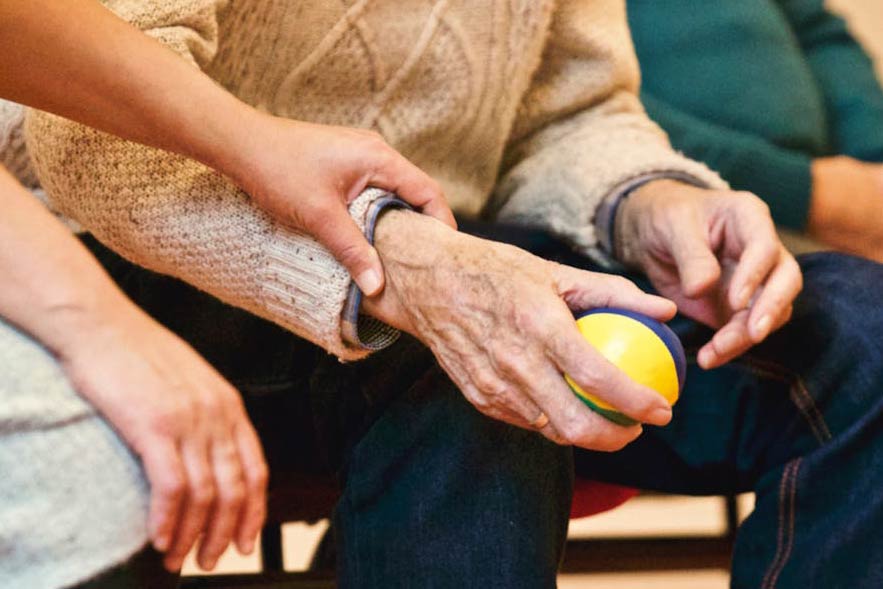
Restoring Stability: Physiotherapy Rehab Exercises for Senior Balance Improvement
As we age, maintaining balance becomes increasingly crucial for preventing falls and preserving independence. Physiotherapy rehabilitation offers tailored exercises and interventions to help seniors improve balance, stability, and overall mobility. In this blog, we’ll explore specific physiotherapy rehab exercises designed to enhance balance in seniors, empowering them to navigate daily activities with confidence and ease.
Sit-to-Stand Exercises
Sit-to-stand exercises focus on strengthening the lower body muscles essential for mobility and balance. Seniors begin by sitting in a sturdy chair with feet flat on the floor. Using the strength of their legs, they rise to a standing position, maintaining proper posture and balance. Variations of this exercise include adding arm movements or performing the motion on unstable surfaces such as a foam pad to increase the challenge. By incorporating sit-to-stand exercises into their routine, seniors can improve leg strength, stability, and coordination, enhancing their ability to rise from chairs safely and with confidence.
Tandem Stance
The tandem stance exercise challenges balance by requiring the person to stand with one foot directly in front of the other, heel to toe, similar to a tightrope walker. Seniors can use a countertop or sturdy chair for support if needed. Holding this position for a few seconds at a time engages the muscles of the lower body and core, improving balance and proprioception. As seniors progress, they can increase the duration of the hold and attempt the exercise without support to further challenge their balance.
One-Leg Stance
One-leg stance exercises focus on improving stability and strength in the legs while standing on one foot. Seniors can begin by holding onto a stable surface for support and lifting one foot slightly off the ground, aiming to maintain balance for several seconds before alternating legs. As they gain confidence and strength, seniors can gradually increase the duration of the hold and perform the exercise without support. One-leg stance exercises help seniors develop proprioception and strengthen the muscles involved in maintaining balance, reducing the risk of falls and improving overall stability.
Heel-to-Toe Walk
The heel-to-toe walk, also known as the “tandem walk,” challenges seniors’ balance and coordination by requiring them to walk in a straight line with one foot directly in front of the other, placing the heel of one foot against the toes of the other. This exercise can be performed indoors or outdoors along a clear pathway. Seniors can start by taking slow, deliberate steps while maintaining a steady gaze ahead and engaging the core muscles for stability. As they become more confident, they can increase the distance and duration of the heel-to-toe walk to further challenge their balance.
Balance Ball Exercises
Using a stability ball or balance ball can add an element of challenge to balance exercises for seniors. Simple exercises such as seated or standing marches, ball squeezes, and gentle torso rotations can help improve stability and core strength while engaging multiple muscle groups. Seniors can perform these exercises under the guidance of a physiotherapist to ensure safety and proper technique.
Weight Shifting
Weight shifting exercises help seniors improve their ability to adjust their body position and maintain balance in various situations. Seniors can practice shifting their weight from side to side, forward and backward, and diagonally while standing. These exercises can be performed with the assistance of a physiotherapist or using a stable surface for support. By incorporating weight shifting exercises into their routine, seniors can improve their dynamic balance and stability, reducing the risk of falls and enhancing their confidence in everyday activities.
Step-Ups
Step-ups are excellent exercises for improving lower body strength, stability, and balance. Seniors can use a sturdy step or staircase and alternate stepping up and down with each leg. Performing step-ups challenges the muscles of the legs and hips while also improving coordination and proprioception. Seniors can start with a low step height and gradually increase the height as they build strength and confidence.
Improvement of Balance in Seniors
Physiotherapy rehabilitation offers a range of exercises specifically designed to improve balance in seniors. By incorporating these exercises into their routine under the guidance of a qualified physiotherapist, seniors can enhance their stability, reduce the risk of falls, and maintain their independence and quality of life. It’s essential for seniors to perform these exercises regularly and consistently to reap the full benefits and ensure continued progress. Additionally, seniors should listen to their bodies and work within their comfort level, gradually increasing the challenge as they become stronger and more confident.
Physiotherapy rehab exercises for balance improvement not only target physical aspects but also promote mental well-being. As seniors gain strength and stability, they often experience increased confidence in their ability to perform daily tasks and engage in activities they enjoy. This sense of empowerment can have a positive impact on overall quality of life, fostering independence, social engagement, and a sense of accomplishment.
It’s important for seniors to consult with a healthcare professional or physiotherapist before beginning any new exercise program, especially if they have pre-existing health conditions or concerns. A qualified physiotherapist can assess individual needs, develop personalized exercise plans, and provide guidance on proper technique and progression.
In addition to structured exercises, seniors can also incorporate balance-enhancing activities into their daily routine, such as gardening, dancing, or practicing yoga. These activities not only improve balance but also offer opportunities for enjoyment, socialization, and relaxation.
Conclusion
Physiotherapy rehab exercises play a crucial role in helping seniors improve balance, stability, and overall well-being. By incorporating a variety of exercises into their routine and working with a qualified physiotherapist, seniors can enhance their confidence, reduce the risk of falls, and maintain their independence for years to come. With dedication, consistency, and support, seniors can continue to enjoy active and fulfilling lives, free from the limitations imposed by balance issues.
